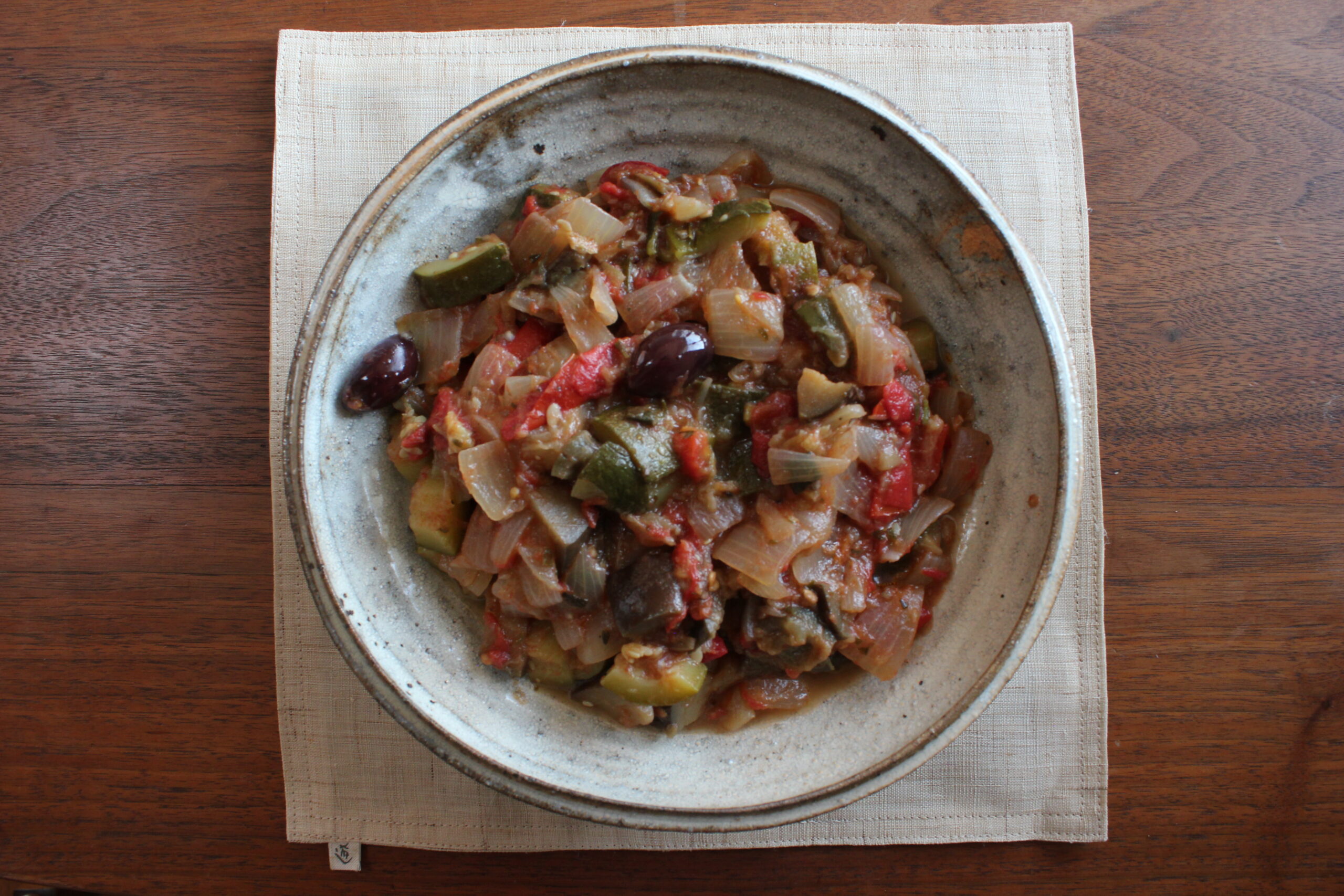When the summer time arrives and more and more summer vegetables are gradually lined up at the farmers market, this is the dish I am excited to make every year. It is a treat only in the summer time. It is one of our absolutely favorite dishes of the season. Usually, what starts to appear first on the market is zucchini. Then some weeks later, the eggplant and tomatoes are showing up. This dish you can also make with a can of tomatoes. But since I cook this only in the summer season, I prefer to use my own roasted tomato sauce or fresh tomatoes. You can eat it with bread, cooked grain, or even make it into pasta. All of them are delicious. That’s why I try to make it in a larger amount so that it can be served for at least two meals, or if possible, three meals! The vinegar I add at the end not only makes the flavor richer and so delicious for eating at any temperature, but it also helps for the dish to be stored well in the fridge.
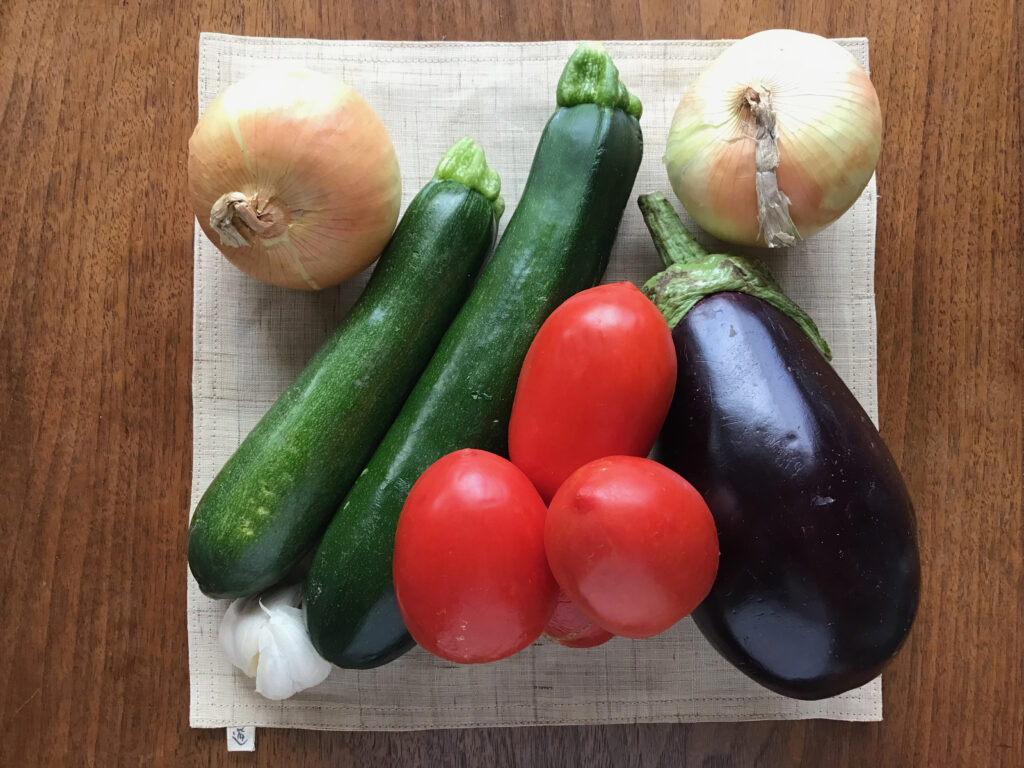
Why “Ratatouille-Caponata”?
Why do I name this Ratatouille-Caponata…? When I was young, I learned both recipes of Ratatouille and Caponata, which are quite similar dishes. I have been always loving to make Ratatouille, where you can eat various vegetables in such a delicious way. When making Caponata, however, I did not want to follow some of the instructions that will make an authentic Caponata. So, I partially adopted the ideas of making Ratatouille into the Caponata recipe. That’s why this name. Maybe we can call this Raponata, which my husband will probably like to say (as he likes combining two different words into one word)…? It is certainly shorter and easier to say.
Difference between Ratatouille and Caponata
I feel a little nervous writing about this, because I am sure that French and Italian people can explain this much more eloquently and correctly. But this is what I have observed through learning both recipes. The home of Ratatouille is in the south of France, whereas Caponata’s home is in Sicily. Both of them are vegetable dishes using tomatoes, eggplants, onion, garlic, and herbs, but here are the differences. The recipe of Ratatouille accommodates more vegetables besides these two, such as carrot, zucchini, celery, and colored peppers. Whereas Caponata stays quite simple with those three vegetables, occasionally with celery, but adds olives and capers as well as seasoning with the vinegar.
My Ratatouille-Caponata
This process of adding vinegar makes it so special with Caponata. It shifts the flavor completely and beautifully. And it makes the dish so delicious eating even in cool or room temperature. Perfect for a summer season dish! And I love adding olive, which also brings different alchemy compare to Ratatouille. I usually don’t add capers, because we don’t have organic capers as a staple at home. The olives alone do wonderful magic.
And yet, I would love to add some more vegetables. Especially zucchini, which would add nice color as well as more nutrition to the dish. And it is another beautiful summer vegetable. If I get nice celery, which is not always the case at the farmers market here in California in the summer time, I would also enjoy adding this.
Another modulation I make when adopting Ratatouille’s recipe, is that I make everything in the pot. For Caponata, Eggplants are roasted in the oven with much olive oil or sometimes deep fried. I choose not to use too much oil or oven heat and cook enough in the pot with the lid off, so that the excess liquid will evaporate well.
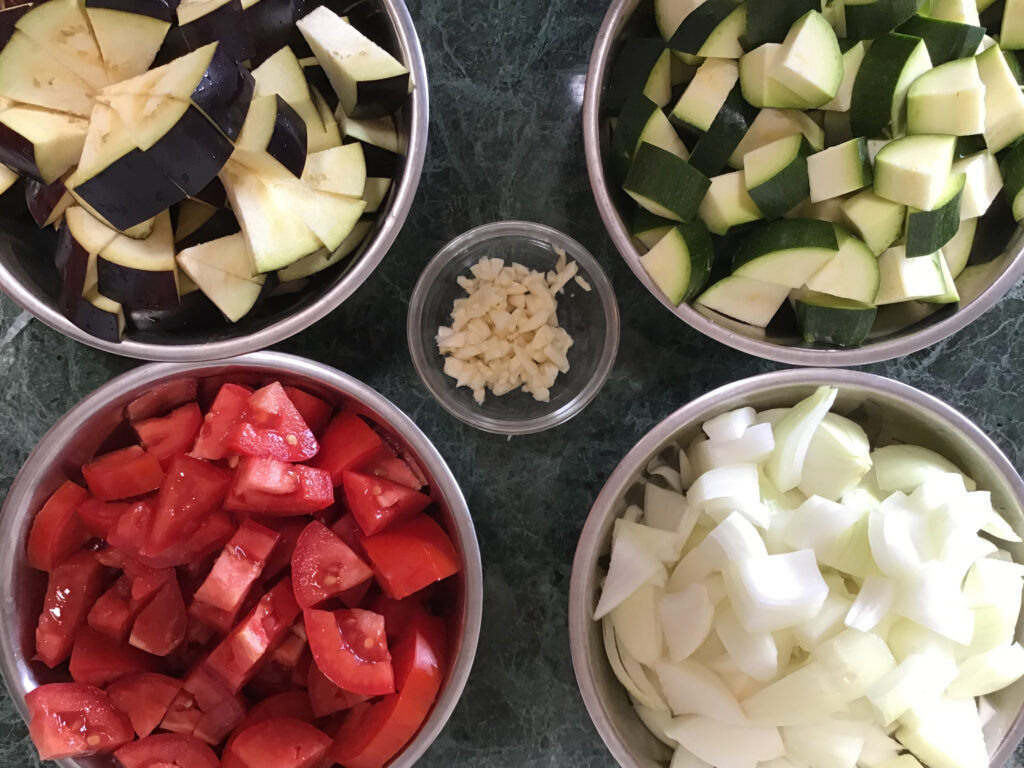
Vegetable ingredients 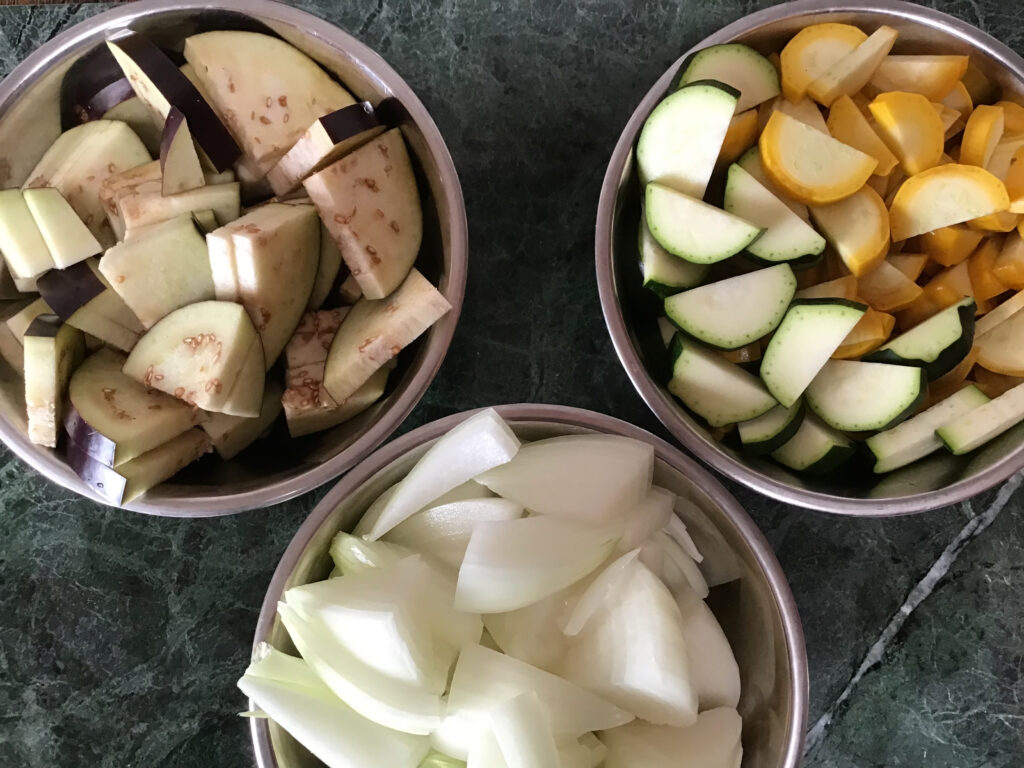
Different way of cutting the eggplant and zucchini
Ratatouille-Caponata
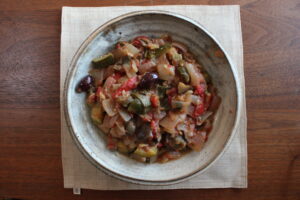
Ingredients
- 1 large onion
- 3 garlic cloves
- 1 eggplant
- 2 zucchini
- 4 fresh medium size tomatoes or 8 oz. tomato sauce
- 12 black olives
- oregano (fresh or dried)
- basil (fresh or dried)
- 2-3 bay leaves
- pepper
- salt
- 1 tbsp balsamic vinegar
Directions
- Step 1 Cut the onion, eggplant, and zucchini into desired size and shape, and mince the onion. If you use fresh tomatoes, cut them into smaller pieces. I sometimes cut the eggplant and zucchini into small cubes, and at other times into thinner slices. The thinner slices definitely allow these vegetables’ water content to evaporate more efficiently. And yet, I like sometimes to have a chunkier feeling when I eat it. So, either way works.
- Step 2 Heat a pot with olive oil at medium high heat and add the garlic to allow its aroma to be infused into the oil.
- Step 3 Put the onion into the pot and sauté until its color becomes half-translucent.
- Step 4 Add zucchini and sauté them together until it becomes half tender.
- Step 5 Add eggplant and sauté them all together. In a couple of minutes or so, add salt, as well as herbs and allow the vegetables’ moisture to evaporate further.
- Step 6 Once everything becomes tender, add cut tomatoes or tomato sauce and mix them together, and add the bay leaves.
- Step 7 Put the lid on the pot and allow everything to cook for about 20 minutes.
- Step 8 Open the lid and add the olives, adding more salt if needed. Then cook further with open lid while stirring from time to time to allow the water to evaporate further.
- Step 9 Once having achieved the desired texture, pour in balsamic vinegar and stir quickly. Then turn off the heat.
- Step 10 You can pour in some more EV olive oil and mix them all well to add some fresh olive oil fragrance and flavor.
